June 29, 2022
With the best and earliest start to the monsoon season underway—3.8 inches of rain—the well is pumping, the tanks are full, and the creeks burble and gush with wild abandon. Already, the tawny dead landscape leans toward living green. I feel the long exhale shifting into a great sigh. Emergence after the deep plunge.
And, as if on cue, my bird of the monsoon flashes marble and amethyst in the morning damp. The first violet-crown in two weeks, since the one that put on a show for the birding crowd, hoping to see Arizona’s first orange-billed nightingale-thrush.
Today, I’m working up a report of my sighting for Arizona Birds, the publication of the Arizona Field Ornithologists. The editor, Doug Jenness, wants facts about the sighting, including field marks that distinguished it from related species and its behavior while I observed it. “In addition, information about its range and habitat in Mexico and the closest occurrences to Arizona,” including the species’ three previous appearances in the US.
I already filled out a report for the Arizona Bird Committee, who “evaluates documentation of rare birds, publishes reports on those evaluations, archives the documentation and maintains a checklist of Arizona birds.” As of February 2021, the checklist contains 567 species accepted by the committee.
I guess I’m qualified to submit #568 since I’m the only person who saw the bird:
Arizona’s First Record of an Orange-billed Nightingale-thrush
On June 15, 2022, at 7:34 AM, while watching birds in my backyard, I noticed movement—a thrush-like flick of wings—in the apple tree. The bird had a russet-colored back and tail and I immediately thought hermit thrush, although a hermit thrush in my yard that late in June seemed odd. Swainson’s thrush was a possibility but would be accidental in June. I’m very familiar with both species, having seen and photographed them hundreds of times.
I lifted my camera and took a few photos. When the bird turned toward me its breast showed no spots. Weird, I thought. Reddish back and uniformly gray breast. Like no thrush I’d ever seen.
As the bird skulked through the apple tree, I followed it with my camera. Then it flew above the water feature to a dead branch in the chokecherry and faced me. More photos. I noted its long pinkish legs and short tail. And that the bill and eye ring were bright orange. I continued taking photos as the bird ducked through the branches and thick leaves and slipped across the rocks to the fountain’s pool where it dipped its bill into the water. Then it flew to the top of the fountain and drank from the trickling spout before flying off to the south.
In three minutes, I took 86 photos, but I had no idea what it was—except some kind of “thrush.” I was certain, however, I’d never seen it before. I showed the photos to my wife, and we consulted the Sibley Guide to Birds, and there it was, we both agreed, on page 441 among the thrushes and robins—an orange-billed nightingale-thrush, a “very rare visitor from Mexico.”
In the US, the thrush has been recorded in Texas (mist netted at Laguna Atascosa NWR in 1996), South Dakota (Spearfish Canyon, 2010) and New Mexico (Nutria Canyon, 2015).
But never in Arizona.
The orange-billed nightingale-thrush (OBNT) is a tropical and subtropical woodland bird that ranges from northern Mexico south to Costa Rica, Panama, Columbia, and Venezuela. For decades, many people have seen and photographed the bird several hundred miles south of Arizona in Yécora and Alamos, Sonora. But then, only last May, a birdwatcher spotted one in Casas Grandes, Chihuahua, about 150 miles southeast of my yard in the Mule Mountains near Bisbee.
I reported the rarity along with my photos on eBird within the hour and sent a note to the eBird administrator, Mark Stevenson. His response was, “Holy Moly! Just saw your Nightingale-thrush photos. Wow. Have you considered access for the hordes who will want to seek it?” I invited anyone interested to come to my yard, which they did, 30-40 people throughout that day and the next. But the thrush never returned.
My bird may be headed north, my friend and megabirder Tom Leskiw says. “I think it plausible that after your bird begins its southward journey it visits you again.” He gives me a date: September 24.
Hordes will be welcome.
Thanks for supporting the Big Yard! More to come!
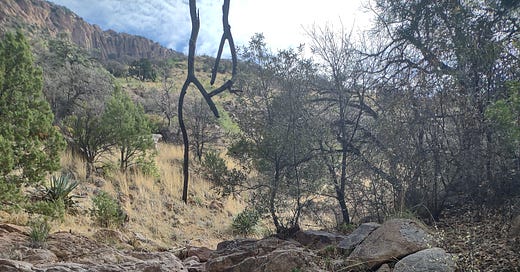



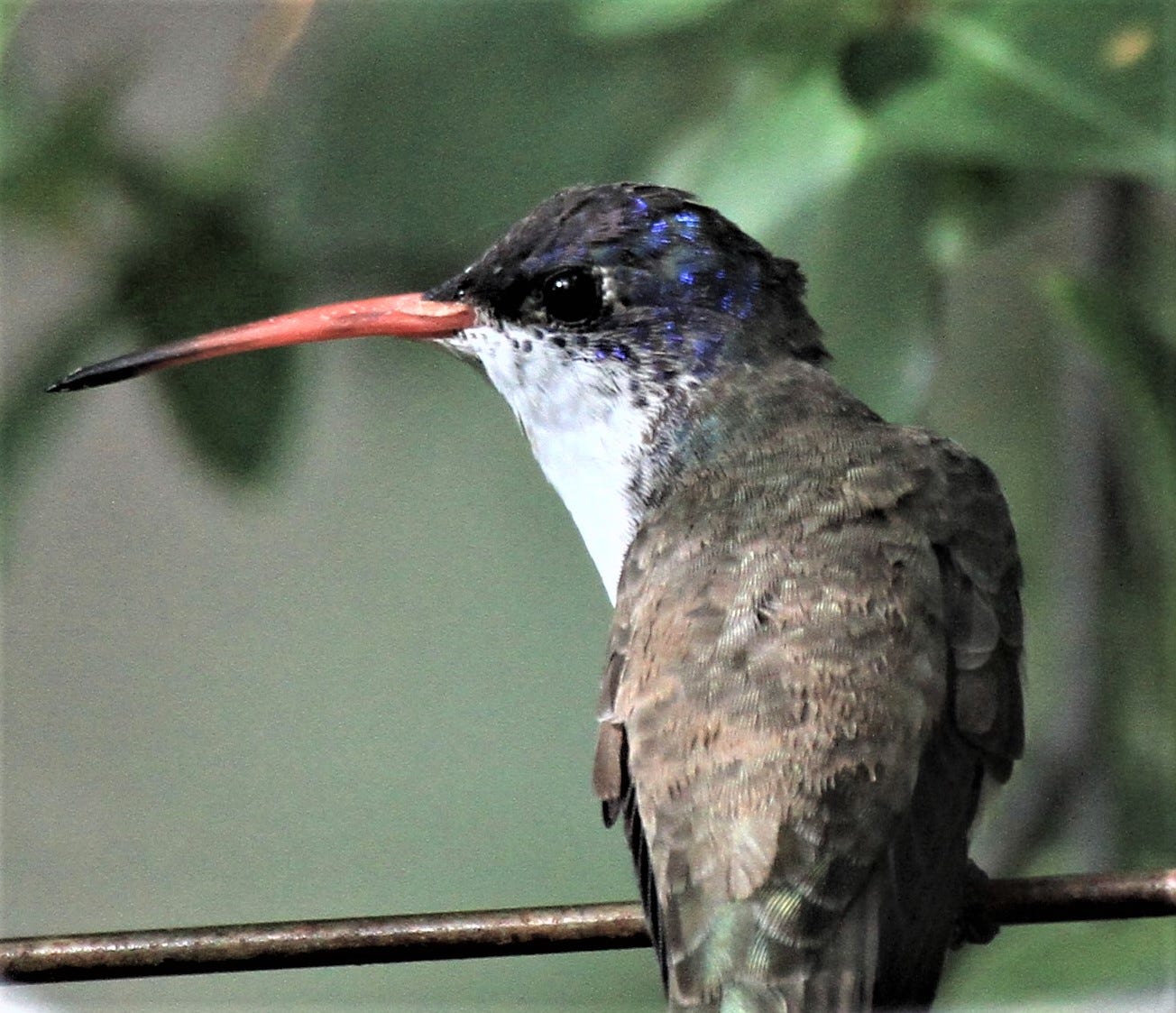
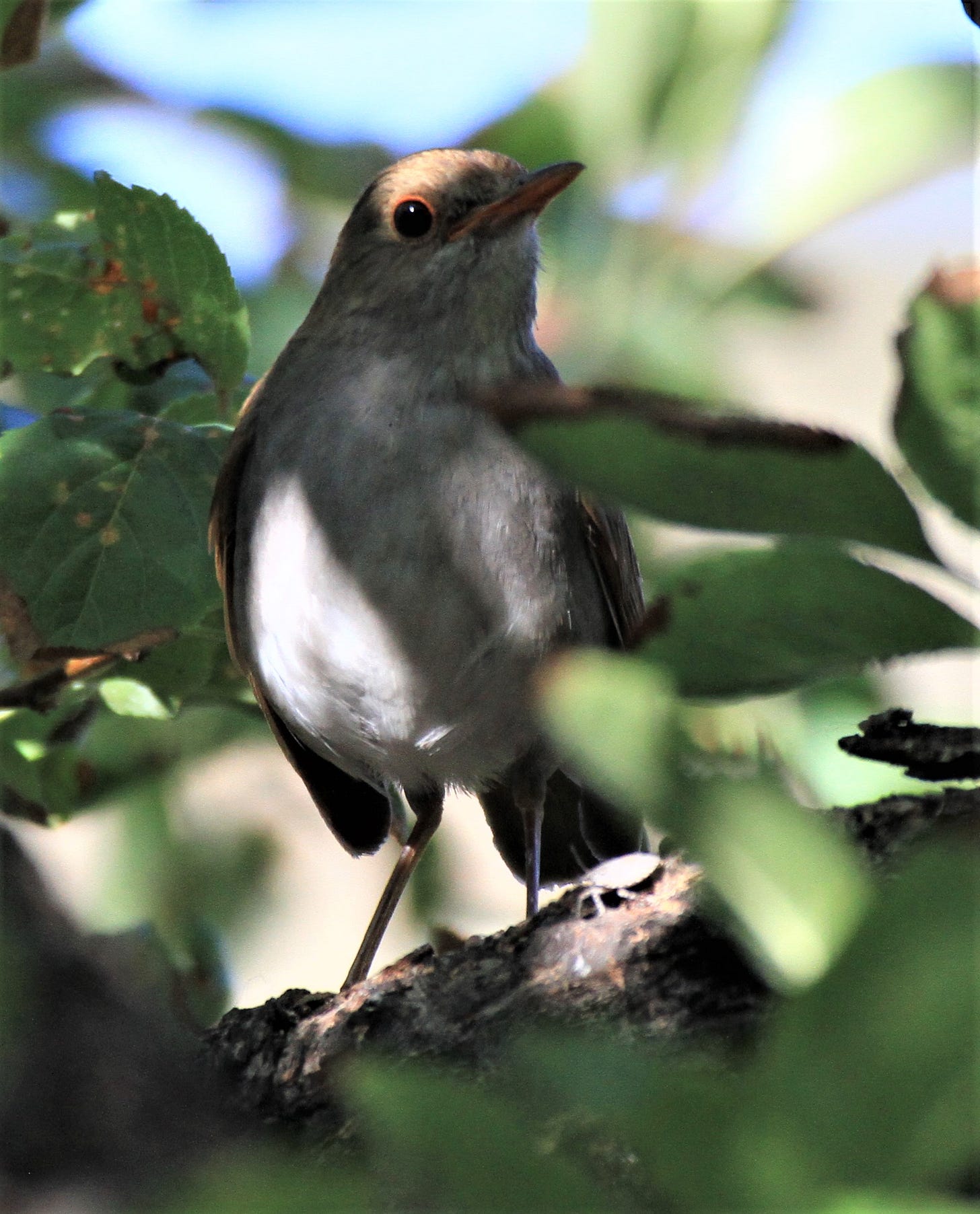
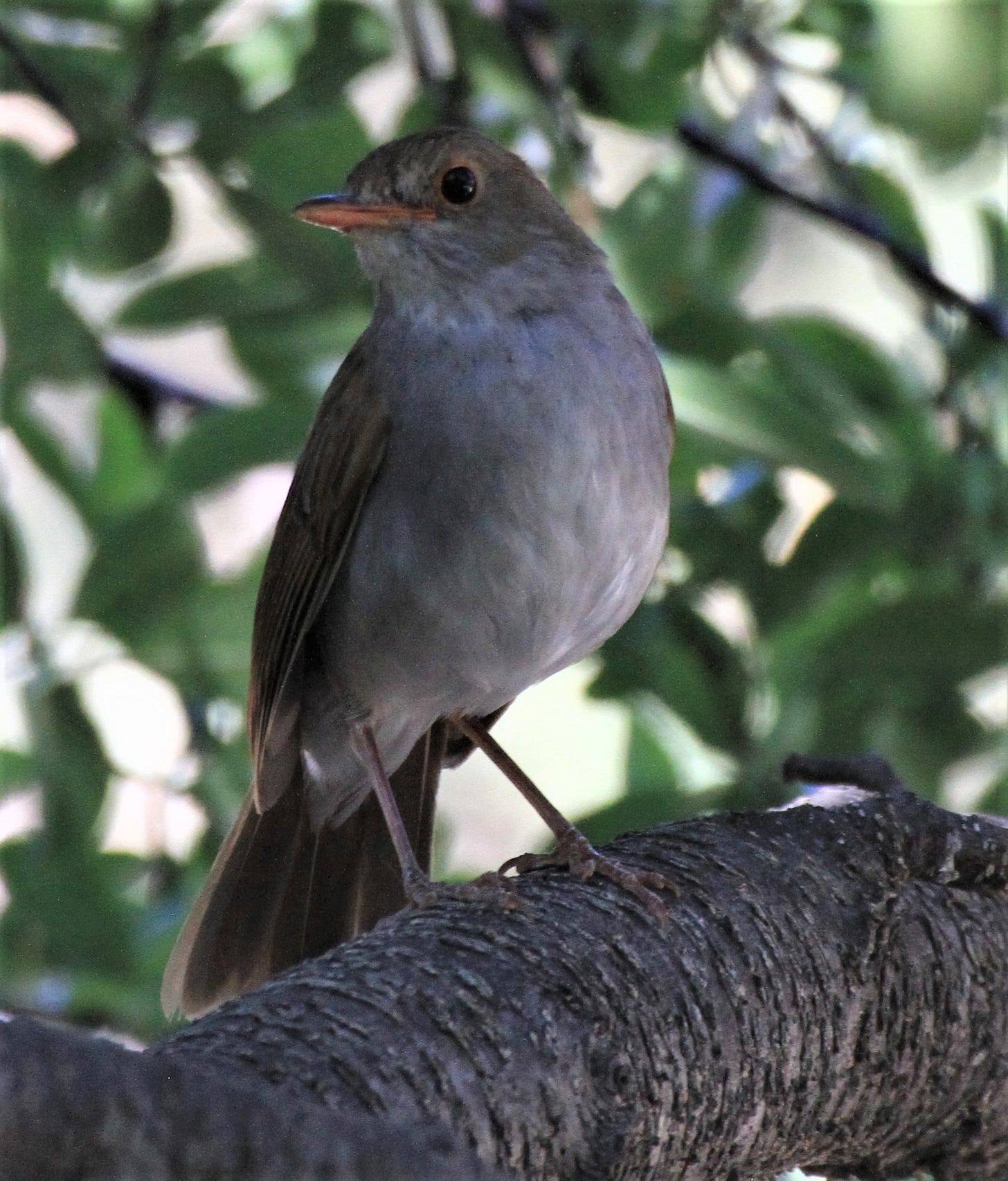
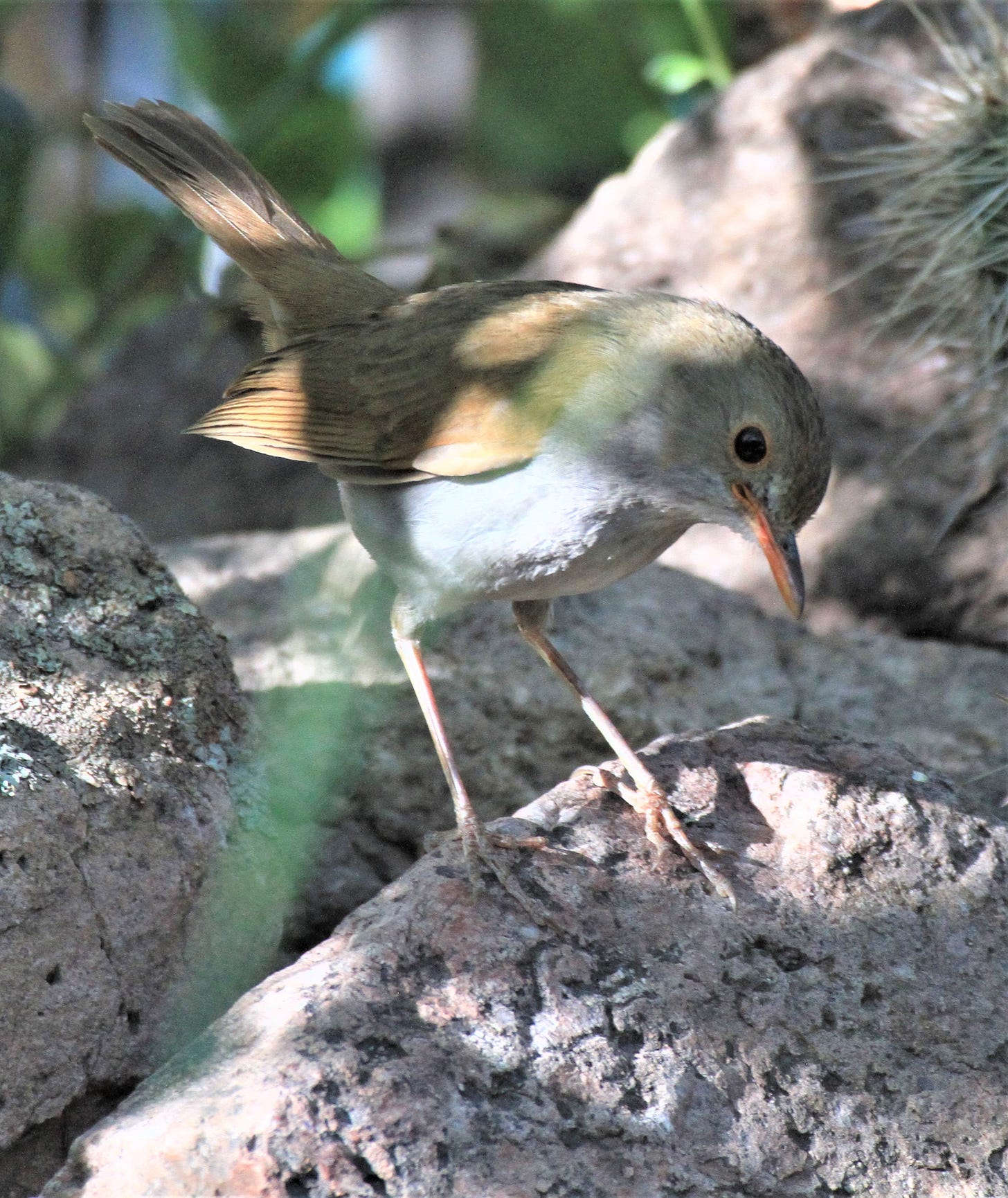
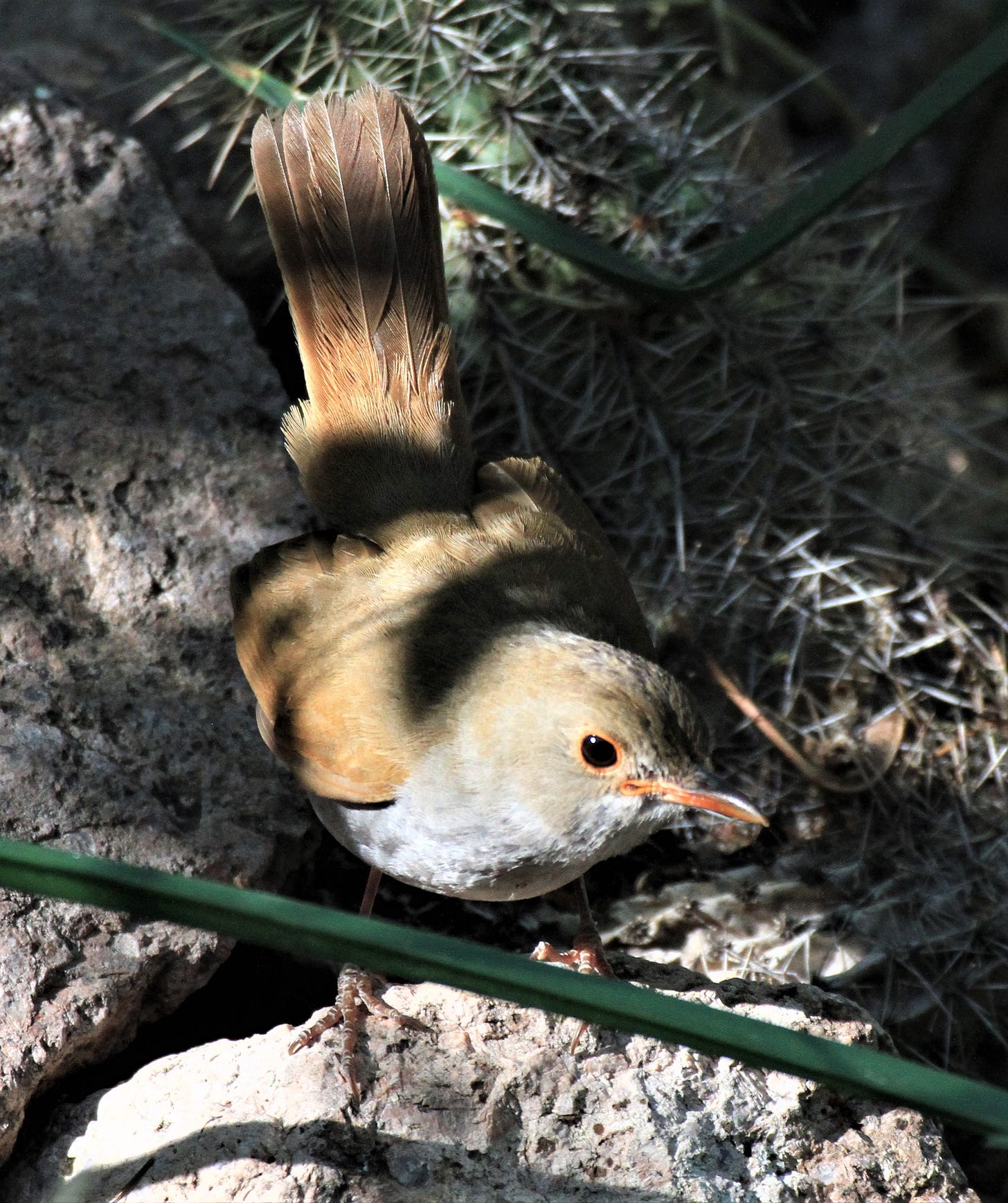

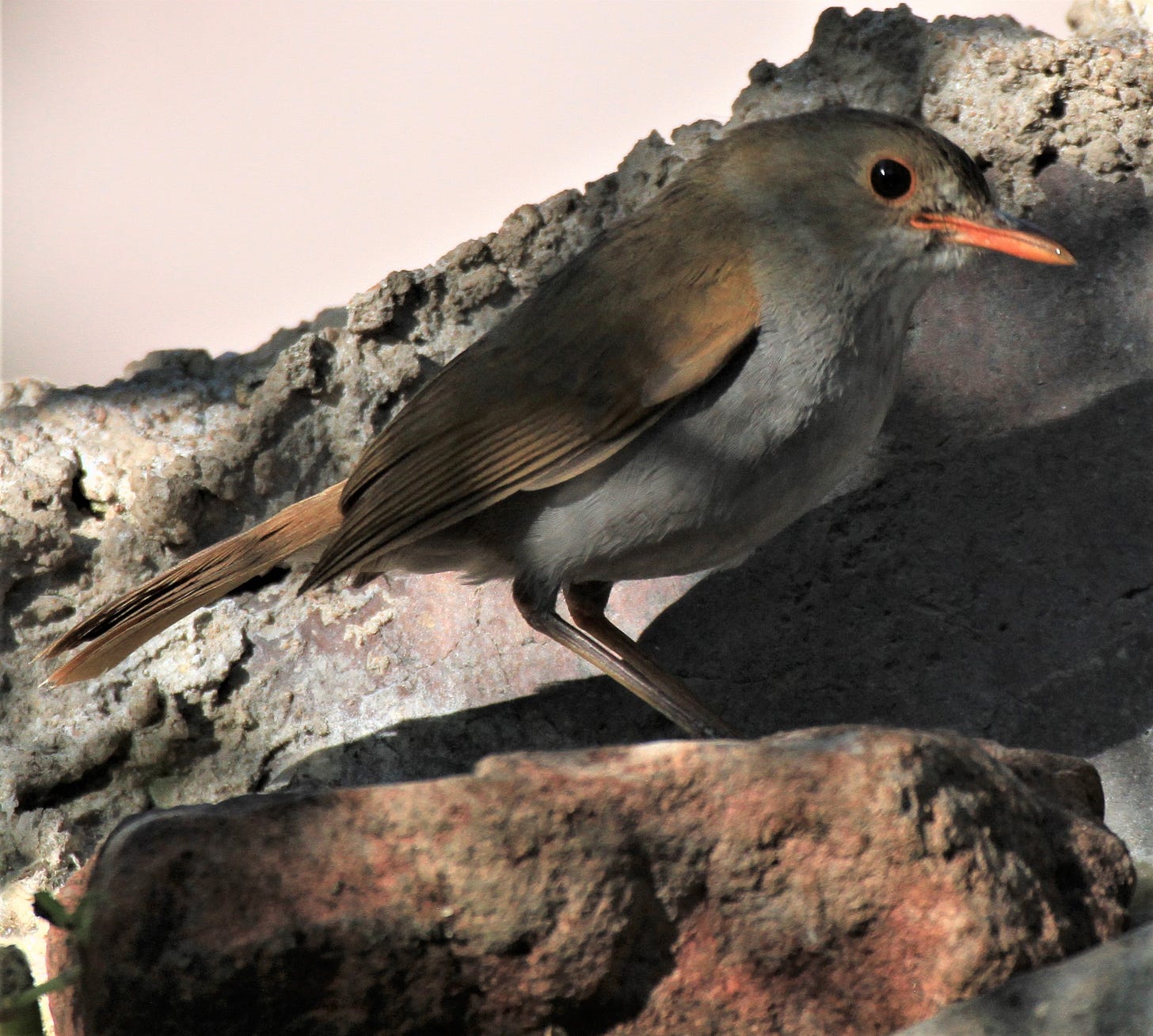
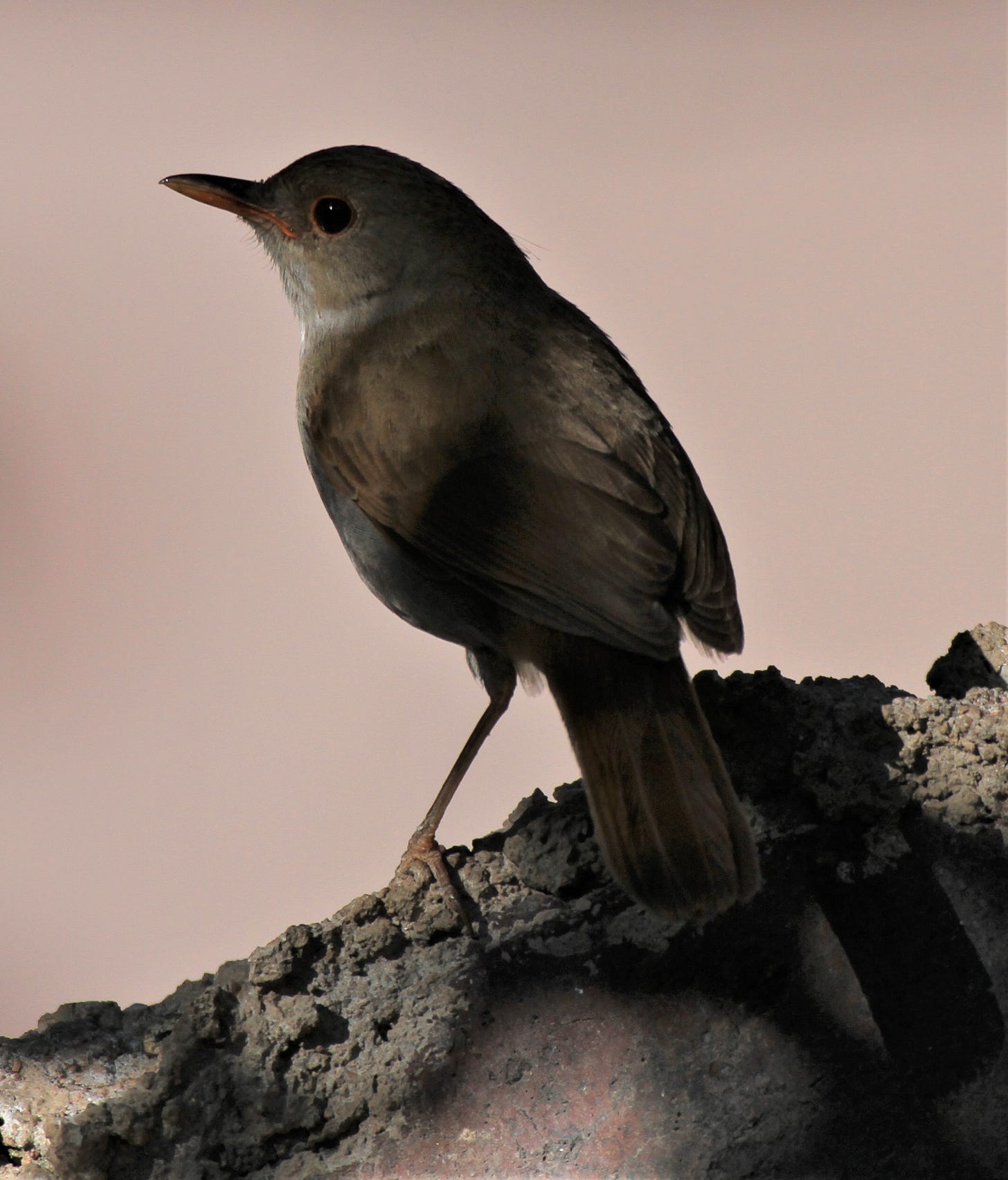

So reserve me a seat on 9/24! ;-)